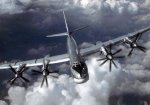kolibri282
Super Member
One of the coolest looking aircraft ever:
Enjoy!
https://www.facebook.com/TheBugatti100pProject/videos/vb.261574317253048/843683509042123/?type=2&theater
http://www.gizmag.com/bugatti-100p-aircraft-prototype-replica/38440/
Enjoy!
https://www.facebook.com/TheBugatti100pProject/videos/vb.261574317253048/843683509042123/?type=2&theater
http://www.gizmag.com/bugatti-100p-aircraft-prototype-replica/38440/
Last edited:


